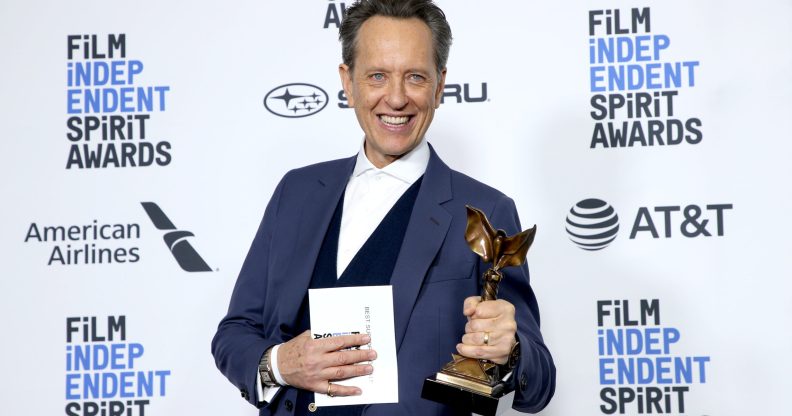Richard E Grant is turning looks and stunting pretty as a fierce drag queen in Everybody’s Taking About Jamie

Richard E Grant. (Phillip Faraone/Getty Images)
Have you ever been lying in your bed, huddling your body pillow at 2am, and wondered: “What would Richard E Grant look like in drag as Loco Chanelle from the hit West End musical Everybody’s Talking About Jamie?
Well, wonder no more.
The Swazi-British actor, 63, underwent a complete transformation for the feature film version of the musical, due to drop in theatres October 21.
Richard E Grant as a drag queen is everything and more we could ask for.
As the world grapples with the coronavirus driving it to a juddering halt, it was gifted first-look pictures of Grant in drag on Friday (May 14) and honestly, they’re the dictionary definition of fabulous and maybe planet Earth isn’t a seething pit of chaos after all.
Brand new images of @RichardEGrant as Loco Chanelle in the Film4-backed adaptation of the musical Everybody's Talking About Jamie ? pic.twitter.com/gTG9uO7fHQ
— Film4 (@Film4) May 15, 2020
OK, it is, but at least we have this film to look forward to.
Chatting to the Daily Mail, Grant explained that drag across his varied career was the one thing he had yet to try out.
“My worry,” he said, “how is anybody ever going to believe I’d been a successful drag queen in Soho in the 1980s?
“I’ve seen Dame Edna,” he added.
“I don’t know if that counts as drag, because it’s more female impersonation,” he said of Barry Humphries, Dame Edna’s alter ego, “he’s unique.”
Everybody’s Talking About Jamie: What is it about?
Everybody’s Talking About Jamie is based on the real-life story of Jamie Campbell, a 16-year-old precociously sure of his identity.
Campbell always knew he was destined to be a drag queen, but it was a dream both encouraged by his blue-collar mother and disapproved by his father.
The musical was first staged at the Crucible Theater in Sheffield after Campbell’s life was captured in a 2011 documentary. It later hopped to London’s West End in 2017.
Part of a colourful cast that break into songs as sappy as they are sassy, Grant’s Chanelle was the drag persona of Hugo Battersby, a former performer bruised by the socio-political battles he fought decades before.
As much as people attempted to puncture Campbell’s aspirations, Chanelle was a reminder of the importance of reflecting on the LGBT+ community’s history, one not of archives and museums but stories told by queer elders.
Chanelle’s partner died in the throes of the AIDS crisis, and he retreated to a costume shop in a run-down part of Sheffield to heal. He ends up helping Campbell, becoming his mentor.

